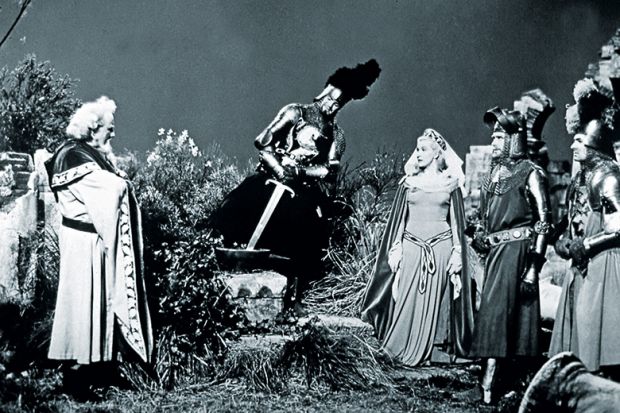Could King Arthur’s legendary round table provide the secret to university leadership? The head of what will be the UK’s first “greenfield” university in 40 years thinks so.
“It sounds idealistic, but we want to use the concept of Camelot,” explained Janusz Kozinski, who starts as president and chief executive of the New Model in Technology and Engineering (NMITE), based in Hereford, in July.
“Instead of having a president in charge, we will have a flat administrative structure – colleagues will sit around a table, as in Camelot, and will all be equal,” said Professor Kozinski, who until recently was the founding dean of the C$250 million (£149 million) Lassonde School of Engineering at Toronto’s York University.
Professor Kozinski, a Polish-born Canadian who spent much of his career at McGill University, where he was vice-principal for research and international relations, said that this Arthurian model based on debate and consensus-building has worked well during his time as dean at Lassonde, which was established in 2011 to teach a new engineering syllabus that included classes in the humanities, law and business using a “flipped classroom” model of teaching without lectures.
“We have done it in Toronto, so there is no reason why we cannot do here in Britain,” he said.
“At McGill, I was looking after 40 research centres and C$1 billion of research funding a year, so if you simply try to force your own opinion [on people], it is not going to work,” he added.
Professor Kozinski’s success at Lassonde, which now has about 2,000 students, makes him an ideal candidate to lead the Hereford project, after it won £8 million in state seed funding in March.
However, he acknowledges that the challenge of setting up a university from scratch in a higher education “cold spot” is far greater than starting a school at an institution with about 55,000 students.
“But what a wonderful challenge,” said Professor Kozinski, whose new institution will have no exams, no lecture halls, no degree classifications and will teach for 46 weeks a year.
“At Lassonde, we had to adhere to policies and protocols, but here we will have carte blanche to create something entirely new with young people’s help,” he explained, saying that he is seeking input from everyone from sixth-formers and university students to emeritus professors on a new engineering curriculum.
“As we have carte blanche, we can hire faculty who are also convinced that the future of teaching engineering will be much different from how it is now,” he added.
Nonetheless, Professor Kozinski admitted that he had been wary about accepting the job in Hereford and had spent more than a year considering the offer. He even made several visits incognito to local colleges in the historic cathedral city to speak to locals about their perceptions of the project, he said.
“But if you never have fear in your life, you will never do anything really new or bold,” he said.
Professor Kozinski has already recruited some of old team at Lassonde for his “new Camelot” and has already begun to alter the project’s original plan – pushing back the official start date by a year to 2020, when a cohort of 300 students will begin their studies.
“We have to offer quality to the first students who select us, so we now have a more realistic timeline,” said Professor Kozinski, whose other main tasks now involve fundraising for the ambitious university, which will eventually teach 5,000 students.
Professor Kozinski, who worked as a researcher at the Massachusetts Institute of Technology, has also moved away from NMITE’s previous stance that none of its staff would undertake research.
“We want them to focus on teaching young people…but our [academic] partner is the University of Warwick, so we want to make sure [that staff] have the chance to do some more traditional research in partnership with them,” he said, adding that this would most likely be “applied research” in line with the commitment to work closely with industry.
The project’s current name is also “too long” and will be replaced shortly, said Professor Kozinski, whose hope is that the project will develop with “class, substance and style”.
“In Toronto, we made a few mistakes,” he reflected. “We won’t make those same mistakes in Hereford – we’ll make new mistakes!”
后记
Print headline: Vision of a ‘new Camelot’ at heart of leader’s plan for engineering university




